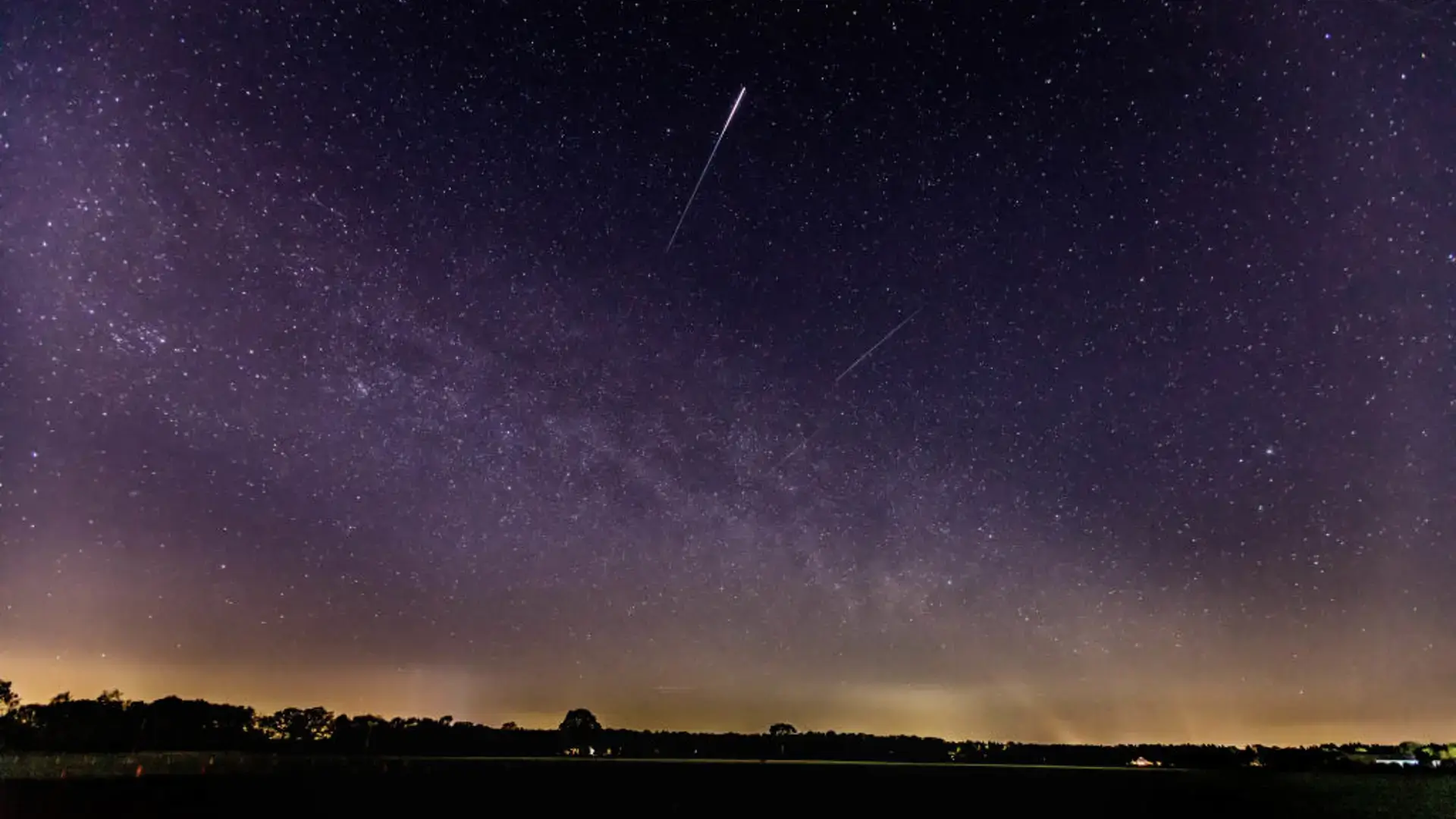The weekend is set to present an astronomical show – the Lyrid meteor shower. This spectacle happens annually around mid-to-late April, with the zenith of the event projected to occur between Sunday and Monday.
The Lyrid meteor shower is a cosmic event that occurs annually. This year, it’s anticipated to reach its peak between Sunday and Monday. The expected count is around 10-20 meteors per hour.
“To experience the Lyrids in all their glory, direct your gaze towards the northeast and keep your focus steady.”
However, this year’s Lyrid meteor shower might prove a bit elusive due to the nearly full moon.
Meteor showers, including the Lyrids, are recurrent phenomena. They usually originate from comet debris, with the Lyrids specifically sourced from the comet Thatcher. As space rocks enter Earth’s atmosphere, the air resistance heats them up, causing the surrounding air to glow and leaving a fiery tail – a “shooting star.”
Space rocks can range in size from a dust particle to a boulder, and their heated air pockets may be visible in the night sky.
For optimal viewing of meteor showers, it’s best to look up between midnight and pre-dawn hours. Dark skies, away from city lights, offer the best visibility. Additionally, meteor showers appear brightest on cloudless nights when the moon phase is smallest.
To enjoy the Lyrids, follow this advice from University of Warwick astronomer Don Pollacco:
“Look to the northeast and just keep staring at the same spot in the sky. It’s always impressive when you see these things.”
The best viewing for the Lyrids is in the Northern Hemisphere. However, moonlight might interfere with visibility, according to the American Meteor Society. Under optimal conditions, the meteors often appear very bright with bluish trails that seem to linger for a few seconds in the sky.
The American Meteor Society maintains an updated list of upcoming major meteor showers, including peak viewing days and moonlight conditions. The next major meteor shower is the Eta Aquarids, peaking in early May, with the best viewing in the Southern Hemisphere. This shower is caused by debris from Halley’s comet.
Reference Article: Foxnews.com




